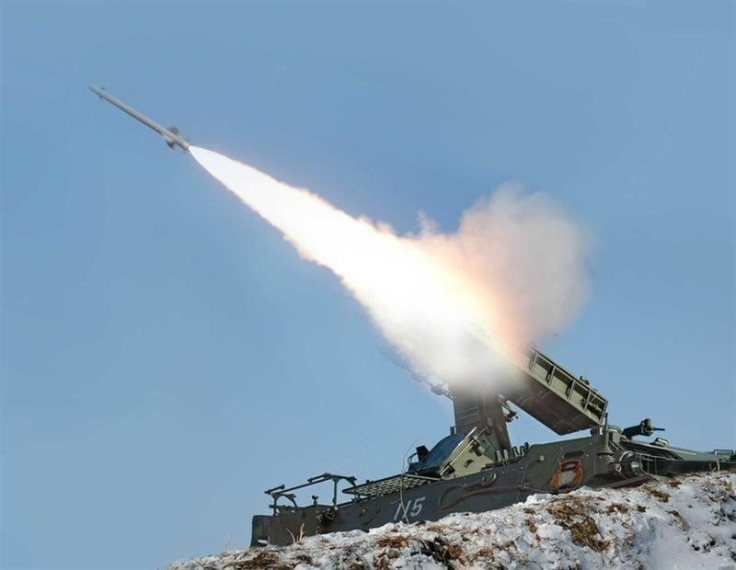US And Russia Locked In Tactical Weapons Race: Russia Alleges US Of Nuclearising Europe

Russia and the United States are in fresh race of tactical nuclear weapons, including missiles and bombs. In early July, the U.S. undertook the flight test of its new gravity bomb and Moscow is now planning to test its nuclear enabled Iskander tactical missile systems. According to news reports, servicemen of a missile unit of the Southern Military District in the Krasnodar Territory are doing the drills for the live-firing of tactical Iskander-M missile systems by late July at the Kapustin Yar range in the Astrakhan Region.
In February, a Russian defense industry official also said that Moscow expects to complete all certification tests for the missile by the end of 2015. “We hope to be through with government certification tests by the end of 2015. But, as you understand, anything can happen," the official said.
Successor of Scud Missile
The Iskander-M missile system is Russia’s successor to the Scud missile system and comes with extra features over the earlier Scud system. The new road-mobile tactical nuclear-capable missile will have a range of 50 to 500 kilometers. According to Global Security, a defense source, its launch carrier vehicle will carry two missiles, rather than one. Each missile will be capable of independently targeting in a few seconds. The missiles are precise and can be retargeted during the flight against any fixed or moving targets which can be missile launchers, tank columns or convoys.
Iskander’s another super feature is its optically guided warhead, that can be controlled by a coded radio signal, from sources like AWACS or unmanned aerial vehicles. It has self-homing capability with the missile's onboard computer able to receive an image or images of the target it will strike. The missile, after locking on the target within its sights, will start travelling towards it in supersonic speed.
In view of the NATO build up around its Baltic borders, Russia is planning to deploy the Iskander system to its westernmost Kaliningrad region, bordering Poland and Baltic states. The U.S. has flayed Russia’s move. Gen. Philip Breedlove, NATO’s Supreme Commander, described it as part of a “pattern of continuing behavior to coerce its Russia’s neighbours in Central and Eastern Europe.”
At the same time, the U.S. is also hyper active in updating its arsenal. In July, the U.S. Air Force and National Nuclear Security Administration conducted the first developmental flight test of jointly-produced B61-12 gravity bomb. The successful test was a major milestone for the B61-12 Life Extension Program and ensured end-to-end system performance under representative delivery conditions. Don Cook, NNSA Deputy Administrator for Defense Programs, said in a press release that achieving the “first complete B61-12 flight test provides clear evidence of the nation's continued commitment to maintain the B61 and provides assurance to our allies.”
Nuclearising Europe
The test evoked Russia's concerns, which alleged that the test is a prelude to the U.S. plan to deploy nuclear weapons in Europe. According to the Russian Deputy Defense Minister, Anatoly Antonov, the test of the B61-12 nuclear bomb confirms U.S. plans to maintain a nuclear arsenal in Europe capable of striking Russian territory. He said the nuclear test in Nevada was "irresponsible" and "openly provocative." Though the B61-12 gravity bomb was non-nuclear, Russia is still angry. "It turns out that under the disguise of a notorious and invented threat coming from the Russian side, the United States was not only increasing the military potential and activity of NATO member states, but was upgrading its nuclear potential as well," Antonovhe said. He also criticised the choice of aircraft, used in testing the bomb. He said it raised suspicions that the U.S. wants the bomb to be used by NATO bombers based in Europe.
For feedback/comments, contact the writer at k.kumar@ibtimes.com.au.





















